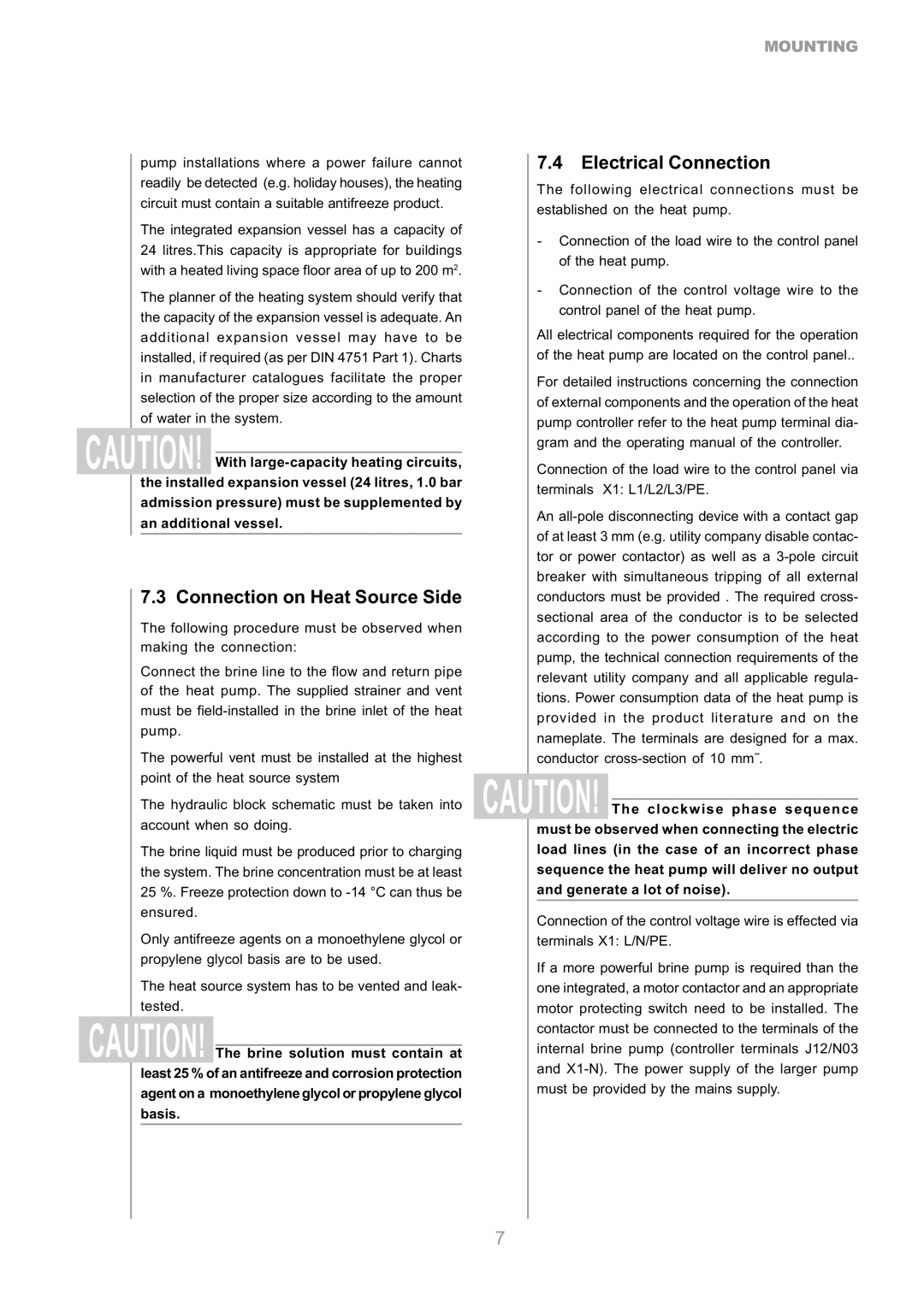
pump installations where a power failure cannot readily be detected (e.g. holiday houses), the heating circuit must contain a suitable antifreeze product.
The integrated expansion vessel has a capacity of 24 litres.This capacity is appropriate for buildings with a heated living space floor area of up to 200 m2.
The planner of the heating system should verify that the capacity of the expansion vessel is adequate. An additional expansion vessel may have to be installed, if required (as per DIN 4751 Part 1). Charts in manufacturer catalogues facilitate the proper selection of the proper size according to the amount of water in the system.
CAUTION! With
7.3 Connection on Heat Source Side
The following procedure must be observed when making the connection:
Connect the brine line to the flow and return pipe of the heat pump. The supplied strainer and vent must be
The powerful vent must be installed at the highest point of the heat source system
The hydraulic block schematic must be taken into account when so doing.
The brine liquid must be produced prior to charging the system. The brine concentration must be at least 25 %. Freeze protection down to
Only antifreeze agents on a monoethylene glycol or propylene glycol basis are to be used.
The heat source system has to be vented and leak- tested.
CAUTION! The brine solution must contain at least 25 % of an antifreeze and corrosion protection agent on a monoethylene glycol or propylene glycol basis.
MOUNTING
7.4 Electrical Connection
The following electrical connections must be established on the heat pump.
-Connection of the load wire to the control panel of the heat pump.
-Connection of the control voltage wire to the control panel of the heat pump.
All electrical components required for the operation of the heat pump are located on the control panel..
For detailed instructions concerning the connection of external components and the operation of the heat pump controller refer to the heat pump terminal dia- gram and the operating manual of the controller.
Connection of the load wire to the control panel via terminals X1: L1/L2/L3/PE.
An
CAUTION! The clockwise phase sequence must be observed when connecting the electric load lines (in the case of an incorrect phase sequence the heat pump will deliver no output and generate a lot of noise).
Connection of the control voltage wire is effected via terminals X1: L/N/PE.
If a more powerful brine pump is required than the one integrated, a motor contactor and an appropriate motor protecting switch need to be installed. The contactor must be connected to the terminals of the internal brine pump (controller terminals J12/N03 and
7
